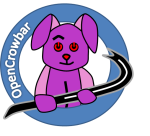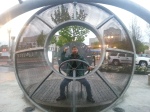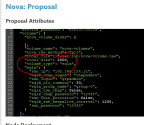Crowbar 2.1 Release brings commercial support, hardware configs, chef and saltstack
 Last week, the Crowbar community completed the OpenCrowbar “Broom” release and officially designed it as v2.1. This release represents 8 months of hardening of the core orchestration engine (including automated testing), the addition of true hardware support (in the optional hardware workload) and preliminary advanced integration with Chef and Saltstack.
Last week, the Crowbar community completed the OpenCrowbar “Broom” release and officially designed it as v2.1. This release represents 8 months of hardening of the core orchestration engine (including automated testing), the addition of true hardware support (in the optional hardware workload) and preliminary advanced integration with Chef and Saltstack.
Core Features:
- RAID – Automatically set RAID configuration parameters depending on how the system will be used.
- Support for LSI controllers
- Single and Dual RAID configuration
- BIOS – Automatically set BIOS settings depending on how the system will be used.
- Configuration setting for Dell PE series systems
- Out of Band Support– Configure and manage systems via their OOB interface
- Support for IPMI and WSMan
- RPM Installation (it riseth again!) – Install OpenCrowbar via a standard RPM instead of a Docker container
Integrations:
- SaltStack integration – OpenCrowbar can install SaltStack as a configuration tool to take over after “Ready State”
- Chef Provisioning (was Chef Metal) – OpenCrowbar driver allows Chef to build clusters on bare metal using the Crowbar API.
Infrastructure:
- Automated smoke test and code coverage analysis for all pull requests.
And…v2.1 is the first release with commercial support!
RackN (rackn.com) offers consulting and support for the OpenCrowbar v2.1 release. The company was started by Crowbar founders Greg Althaus, Scott Jensen, Dan Choquette, and myself specifically to productize and extend Crowbar.
Want to try it out?
 Instructions to install OpenCrowbar v2.1 are in the Crowbar Deploy Guide.
Instructions to install OpenCrowbar v2.1 are in the Crowbar Deploy Guide.- I’m creating a video series showing off OpenCrowbar v2.1 all the items in this list.
- Check out RackN OpenStack via PackStack Install
- Play with Judd’s Chef Provisioning integration
 Today, we’re ready to help people run and expand OpenCrowbar (days away from v2.1!). We’re also seeking investment to make the project more “enterprise-ready” and build integrations that extend ready state.
Today, we’re ready to help people run and expand OpenCrowbar (days away from v2.1!). We’re also seeking investment to make the project more “enterprise-ready” and build integrations that extend ready state.




 Today
Today 

 Nearly a year ago at
Nearly a year ago at 